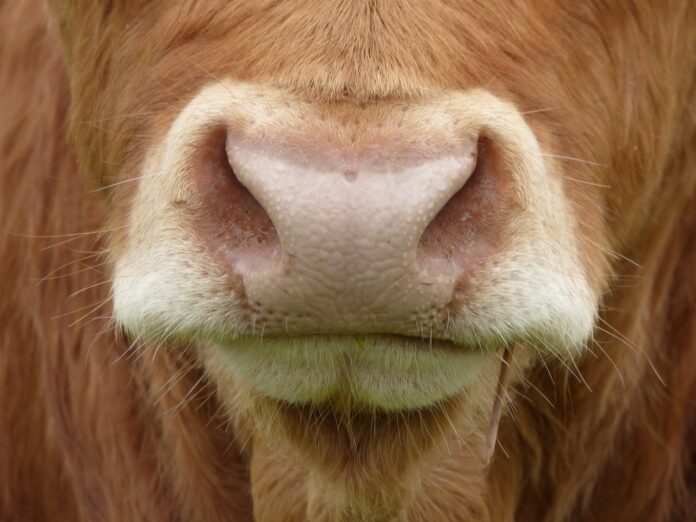Sligo Regional Veterinary Laboratory (RVL) recently diagnosed Malignant Catarrhal Fever (MCF) in a pair of 14-month-old heifers from the same herd that presented with the ‘head and eye form’ of the condition, three weeks apart, according to a lab report.
The herdowner had sheep lambing on the same holding in the period before the heifers presented with clinical signs, the Veterinary Ireland Journal notes.
The common findings were bilateral iridocyclitis, lymphadenopathy, muzzle erosions, sinusitis, encephalitis, and generalised vasculitis.
DNA sequences specific to Ovine Herpes Virus 2 (OHV2) were detected systemically in both heifers by PCR technique.
That’s Farming spoke to a qualified, practicing, and registered farm vet to explain the clinical signs for readers:
Clinical signs:
- Often fatal systemic disease;
- Can impact a single animal or a group;
- Caused by Ovine Herpesvirus-2 (OvHV-2) – virus naturally infects most sheep without causing clinical disease and persists for the lifetime of the animal;
- Cloudiness of eyes, inflammation and discharge;
- Disorientation;
- Salivation;
- Complete lack of appetite;
- High temperature – 40°C+;
- Lesions in mouth and nose and on muzzle;
- Possible diarrhoea;
- Seizures;
- Enlarged lymph nodes;
- Weight loss;
- Mortality rate in clinically impacted animals is very high – death occurs within up to 10 days of the onset of clinical signs;
- No specific treatment;
- No licenced vaccination;
- How to prevent: Not housing cattle together with sheep under the one roof;
- Diagnosis should be confirmed by a vet always – clinical signs/symptoms can be similar to other diseases and infections.
RVL network and report
The six-strong RVL network consists of Athlone, Dublin, Limerick, Cork, Kilkenny, and Silgo.
The objective of the report, which is published in the Veterinary Ireland Journal, is to provide feedback to veterinary practitioners on the pattern of disease syndromes at this time of the year by describing common and highlighting unusual, cases.
The reports describe a selection of cases investigated by the Department of Agriculture, Food, and the Marine’s (DAFM) veterinary laboratories.
The reports, which are published in the Veterinary Ireland Journal, aim to assist with future diagnoses, encourage thorough investigations of clinical cases, highlight the available laboratory diagnostic tools, and provide a better context for practitioners when interpreting laboratory reports.
Note – This article is for information purposes only – always seek the expertise of your vet.





